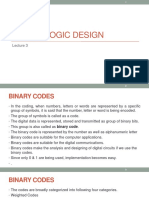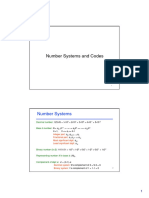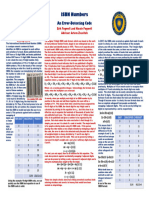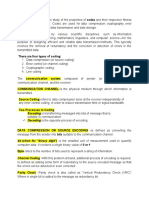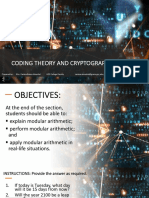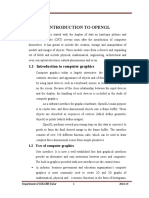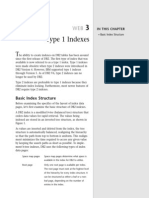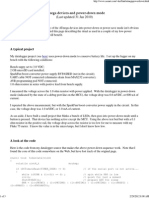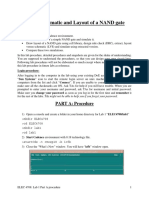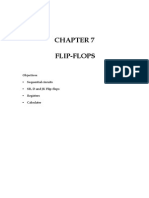0% found this document useful (0 votes)
8 views54 pagesCODES
This document discusses the concepts of codes and ciphers, focusing on their definitions, applications, and examples such as ISBN and UPC systems. It covers topics like cryptology, coding theory, and error detection methods, including Hamming codes and cryptography for securing information. Additionally, it provides practical examples for calculating check digits and encrypting messages using shift ciphers.
Uploaded by
wmnronquillo4Copyright
© © All Rights Reserved
We take content rights seriously. If you suspect this is your content, claim it here.
Available Formats
Download as PDF, TXT or read online on Scribd
0% found this document useful (0 votes)
8 views54 pagesCODES
This document discusses the concepts of codes and ciphers, focusing on their definitions, applications, and examples such as ISBN and UPC systems. It covers topics like cryptology, coding theory, and error detection methods, including Hamming codes and cryptography for securing information. Additionally, it provides practical examples for calculating check digits and encrypting messages using shift ciphers.
Uploaded by
wmnronquillo4Copyright
© © All Rights Reserved
We take content rights seriously. If you suspect this is your content, claim it here.
Available Formats
Download as PDF, TXT or read online on Scribd
/ 54




























